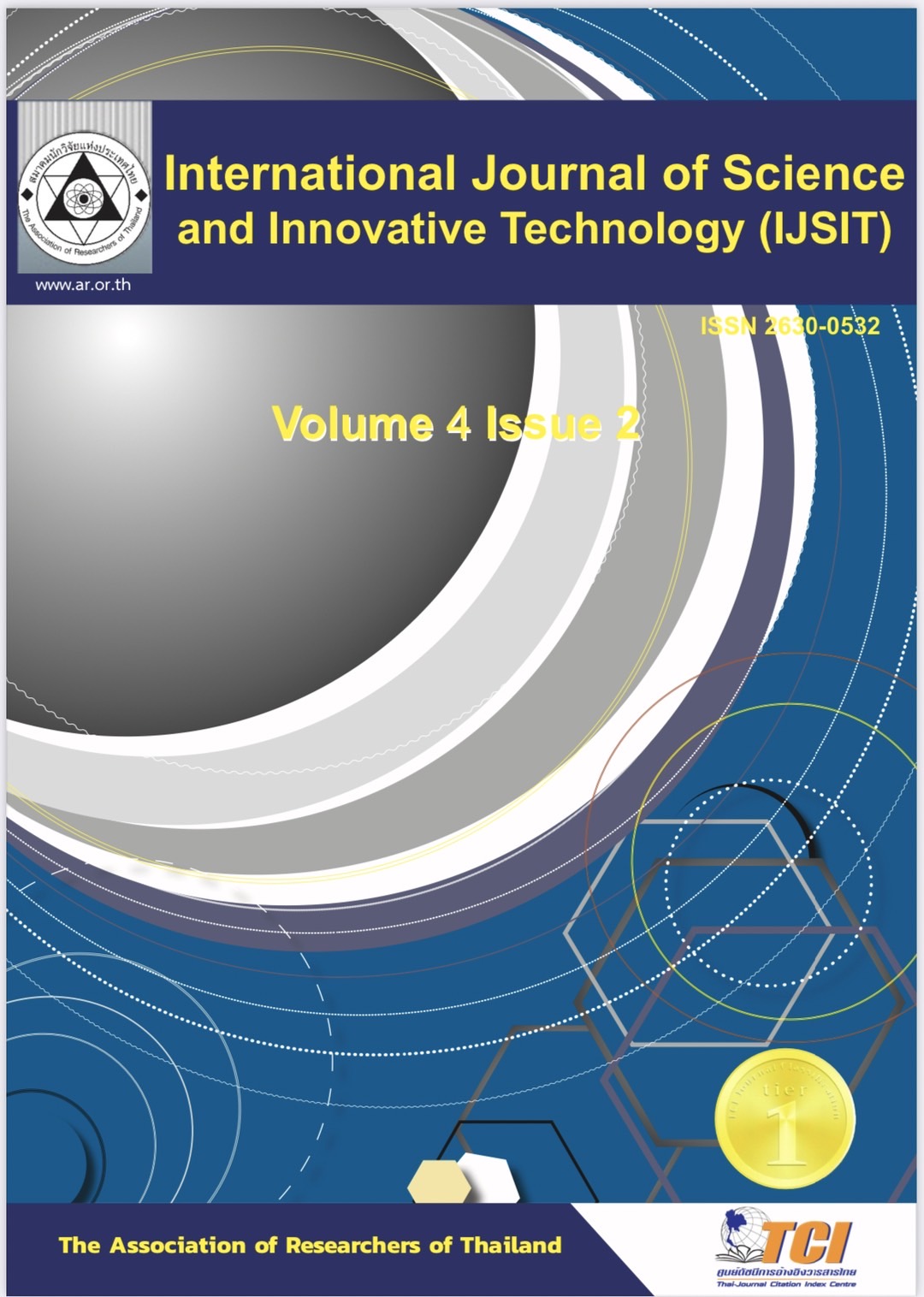Correlation of water quality and heavy metal concentration in Chao Phraya River Basin: An effect on human health
Main Article Content
Abstract
Heavy metal contamination in the river was a national problem in Thailand because the contaminant may be accumulated in sediment, aquatic organisms, entered the food chain, and affected human health. This study reported the correlation between heavy metal concentration and water parameters with stepwise multiple linear regression using observed data over ten years (2009-2018). The results indicated that the concentration of As, Cd, Cr, Cu, Pb, Hg, Mn, Fe, Ni, and Zn were closely related to pH, turbidity, Total Phosphorus (TP), NH3, and Dissolved Oxygen (DO). The stepwise multiple regression showed that 70% of the equation had r2 values greater than 0.842. The model in this study will be applied to predict heavy metal contamination in surface water. The Hazard quotient (HQ), Hazard index (HI), and Carcinogenic risk (CR) of adults and children were also calculated. The human health assessment information will be applied coupled with a multiple linear regression model to effectively manage heavy metal pollution in the Chao Phraya River.
Article Details
References
Adesiyan, I.M., Johnson, M.B., Aladesanmi, O.T., Okoh, A.I., Ogunfowokan, A.O. (2018). Concentrations and Human Health Risk of Heavy Metals in Rivers in Southwest Nigeri. Journal of Health & Pollution, 8 (19), 1-12.
Ayantobo, O.O., Awomeso, J.A., Oluwasanya, G.O., Bada, B.S., Taiwo, A.M. (2014). Non cancer human health risk assessment from exposure to heavy metals in surface and groundwater in Igun, Ijesha, Southwest Nigeria. American Journal of Environmental Sciences, 10 (3), 301-310.
Butler, B.A. (2009). Effect of pH, ionic strength, dissolved organic carbon, time, and particle size on metals release from mine drainage impacted streambed sediments. Water Research, 43 (5), 1392–1402.
Hoang, H.G., Chiang C.F., Lin, C., Wu, C.Y., Lee, C.W., Cheruiyot., N.K., Tran, H.T., Bui, X.T. (2021). Human health risk simulation and assessment of heavy metal contamination in a river affected by industrial activities. Environmental Pollution, 285 (15), 117414.
Li, Y., Chen, H., Teng, Y. (2020). Source apportionment and source-oriented risk assessment of heavy metals in the sediments of an urban river-lake system. Science of the Total Environment, 737, 140310.
Mingkhwan, R., Worakhunpiset, S. (2018). Heavy Metal Contamination Near Industrial Estate Areas in Phra Nakhon Si Ayutthaya Province, Thailand and Human Health Risk Assessment. International Journal of Environmental Research and Public Health, 15, 1890.
Mukherjee, I., Singh, U.K., Singh, R.P., Anshumali, K.D., Jha, P.K., Mehta, P. (2020). Characterization of heavy metal pollution in an anthropogenically and geologically influenced semi-arid region of east India and assessment of ecological and human health risks. Science of the Total Environment. 705, 135801.
UNESCO. (2008). Chao Phraya River Basin (Thailand). Retrieved from http://www.unesco.org/water/wwap/case_studies/chao_phraya/index.shtml
Wu, H., Xu, C., Wang, J., Xiang, Y., Ren, M., Qie, H., Zhang, Y., Yao, R., Li, L., and Lin, A. (2021). Health risk assessment based on source identification of heavy metals: A case study of Beiyun River, China. Ecotoxicology and Environmental Safety, 213, 112046.
Dhirachaikulpanich, N. (2001). Geotechnical Properties of the Chao Phraya Delta Plain. Master Thesis (Civil Engineering). Kasetsart University. Bangkok, 195.
Xiao, J., Wang, L., Deng, L. and Jin, Z. (2019). Characteristics, sources, water quality and health risk assessment of trace elements in river water and well water in the Chinese Loess Plateau. Science of the Total Environment. 650 (2), 2004-2012.


